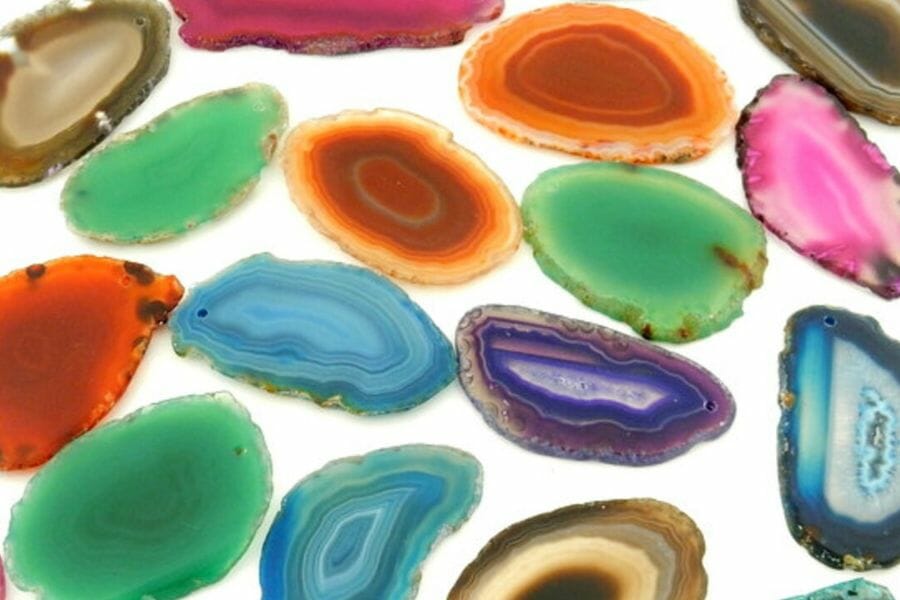Agates are one of the most sought-after gemstones by rockhounds and collectors alike. They are prized for their beautiful patterns and vibrant colors and are found in many parts of the world. If you’re interested in hunting for agates, there are a few things you should know to increase your chances of success.
We’ll explore the geology of agate formation and where to find them. We’ll also provide tips and techniques for identifying agates and the tools you’ll need to start your own agate collection.
Whether you’re a seasoned rockhound or a beginner, this guide will help you uncover the beauty of agates and really kickstart your agate collection.
How to find agates and where they form
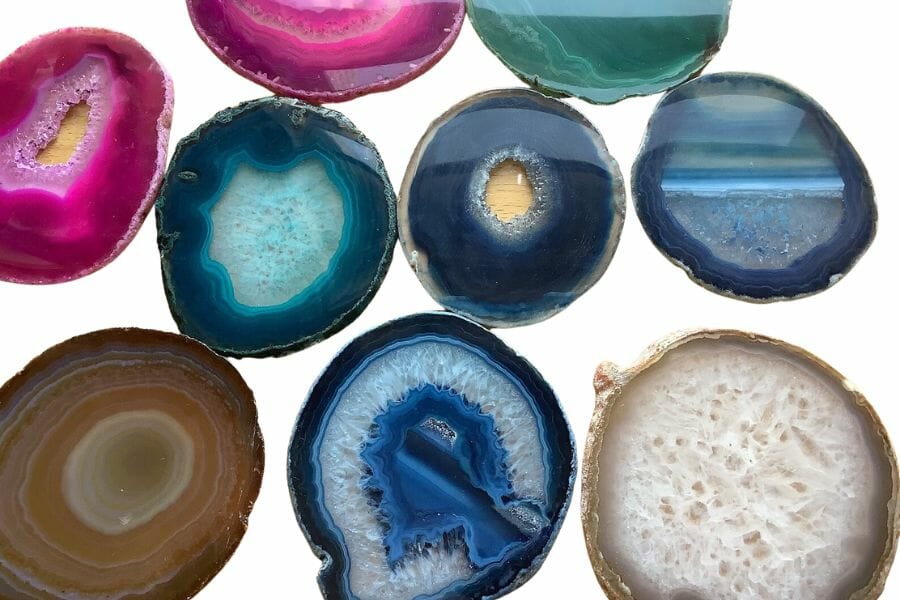
Photo provided by AmazingCrystals
Agates are formed from the accumulation of silica-rich groundwater in neutral to acidic environments inside the voids and cavities of volcanic rocks because of their greater tendency to retain groundwater over extended periods.
This is why agates are less likely to be found in metamorphic and sedimentary rocks, as they are more porous and permeable than igneous rocks. These gemstones occur as layers parallel to the adjacent cavity walls.
Agates are found all over America, but states like Minnesota, Maryland, Nebraska, North Dakota, Louisiana, Montana and Maryland all have agate as their official state gemstone. This makes it the most well-known state gemstone and rock by a wide margin.
Where To Find Agates In The US
*Click On Each State To See An In-Depth Guide*
To make your life easier, we’ve put together quite a few local guides for different states around the country. Each of these guides has many locations that have been productive places for finding different types of agates.
Agats are found in many different states and they tend to be found in abundance. Don’t forget to check the guides of nearby states as well since it’s often easier to hop over to a border state than drive all the way across the state you live in!
If you’re on your phone clicking on the states above can be a bit tricky so we will also list out the individual guides below for you to select. Read through them and let us know if we missed any great locations that should be included!
Local agate hunting guides for each state
Types of agates
There are several different varieties of agate. This gemstone’s variations are classified according to its color patterns, chemical composition, inclusions (any substance trapped inside a mineral during formation) or origins. Some of the most common ones include:
Moss agate
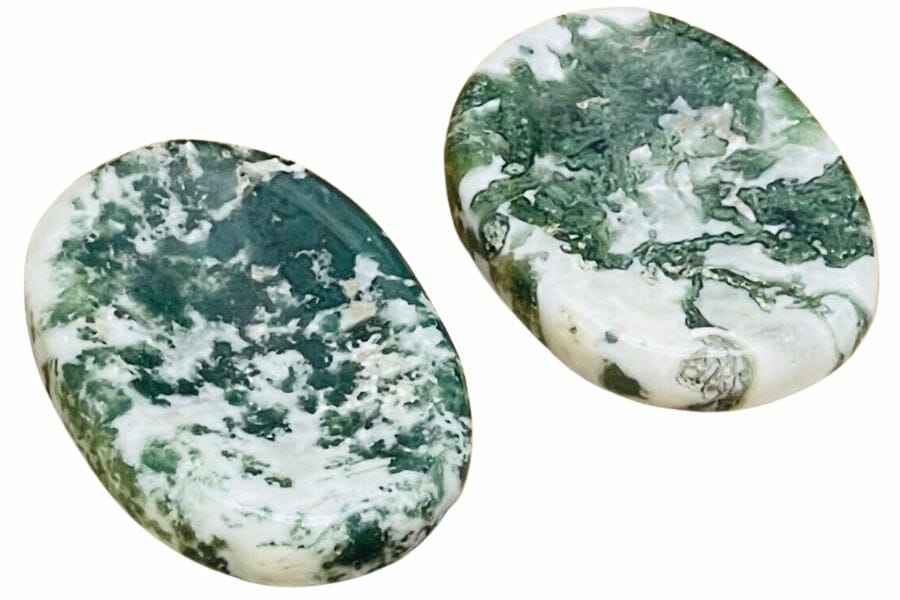
Photo provided by Natures Artifacts
This type of agate has green mineral inclusions that grow in patterns resembling plants. It is widely distributed, has a wide range of appearances, and is commonly found in Montana.
It can occur as dendritic (tree-like) agate, typically having a similar pattern but less clarity.
Onyx agate
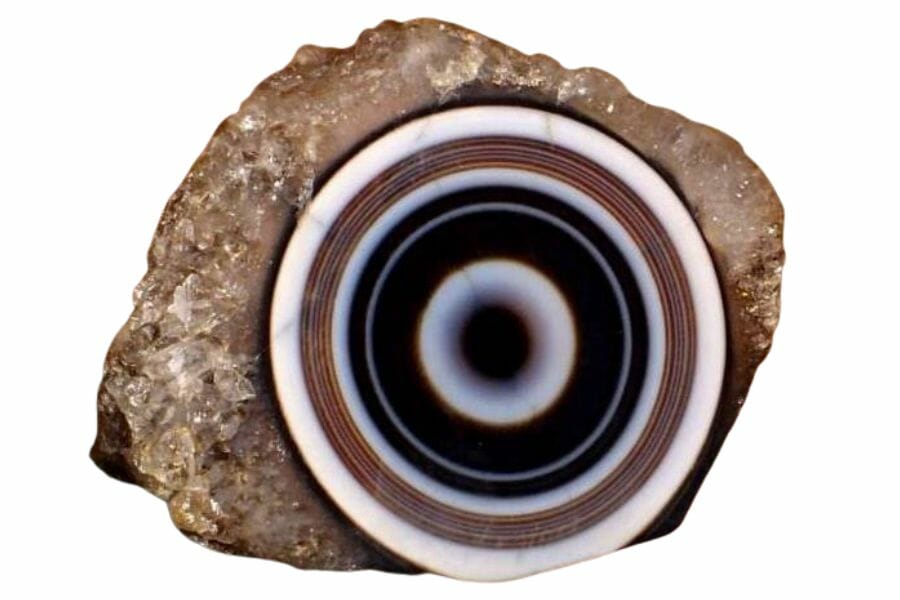
Agate that contains parallel color bands is known as onyx. Chalcedony bands in alternate colors make up this type of agate, and the white bands are frequently interspersed with black, brown, or red bands.
Its crystalline structure can only be seen when magnified and is composed of tiny intergrowths of quartz silica minerals.
Fire agate
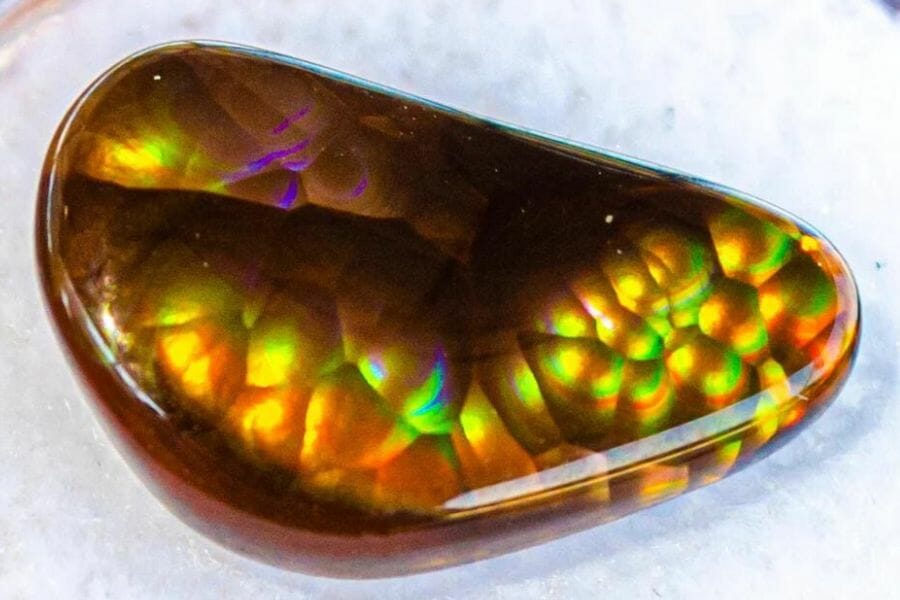
Photo provided by Kanan Mexico
This gemstone is one of the most beautiful and expensive types of agate. It is typically found in Arizona and the American Southwest and has iridescent rainbow colors, and takes on a botryoidal (grape-like) shape.
Lake Superior agate
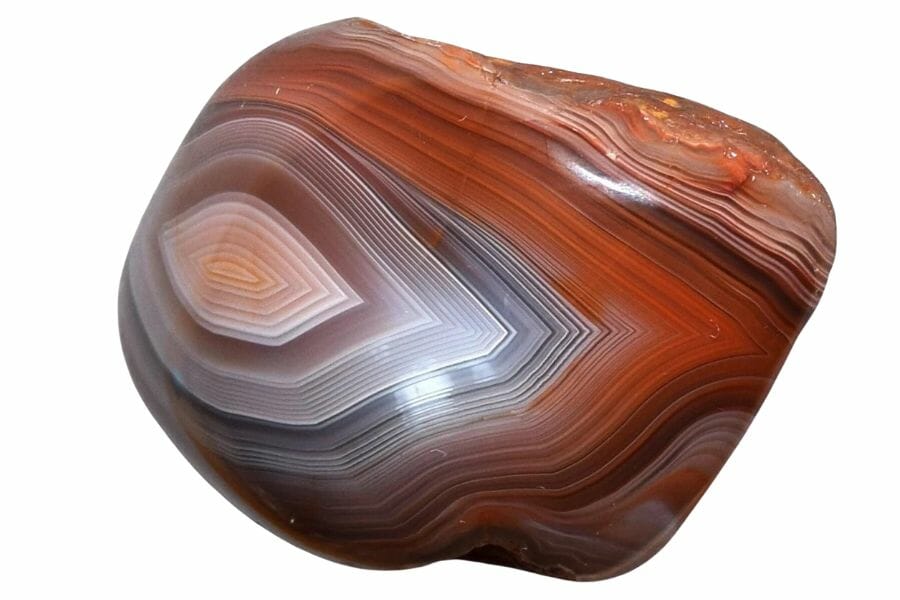
Photo provided by Minnesota Rocks Gems
This iron-stained agate is found on the beaches of Lake Superior. The gemstone’s widespread distribution and bands of color rich in iron represent the geologic history of Minnesota, Wisconsin and Michigan.
Fortification agates
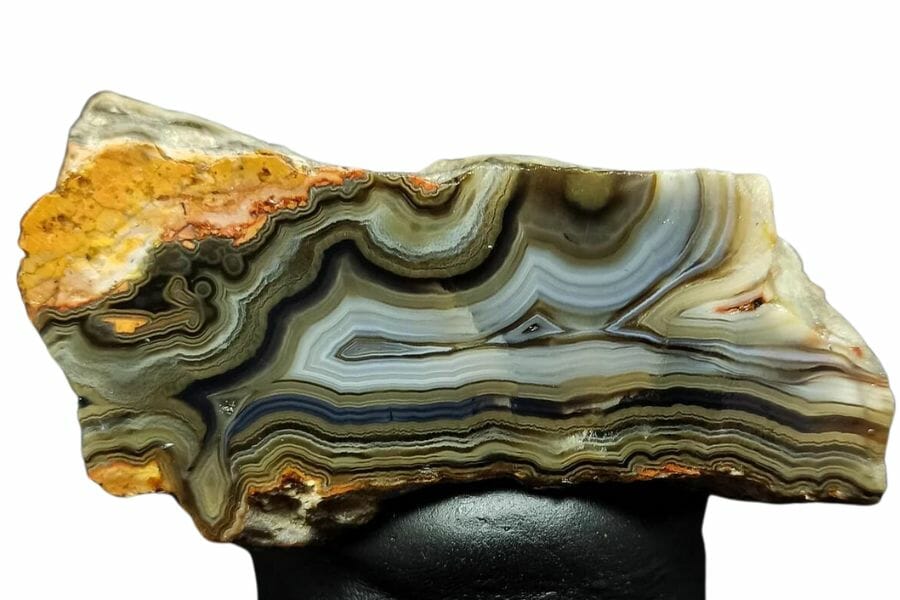
Photo provided by Infinity Agate Store
Fortification agate is striped, multicolored and frequently forms rings. Since the stone was formed in layers, the “fortifications” contained bands that looped around inside the nodule.
They are common and are frequently tumble-polished or left in their natural state. The Great Lakes region hosts many of the most sought-after materials, but nodules can be found nationwide.
Laguna agates
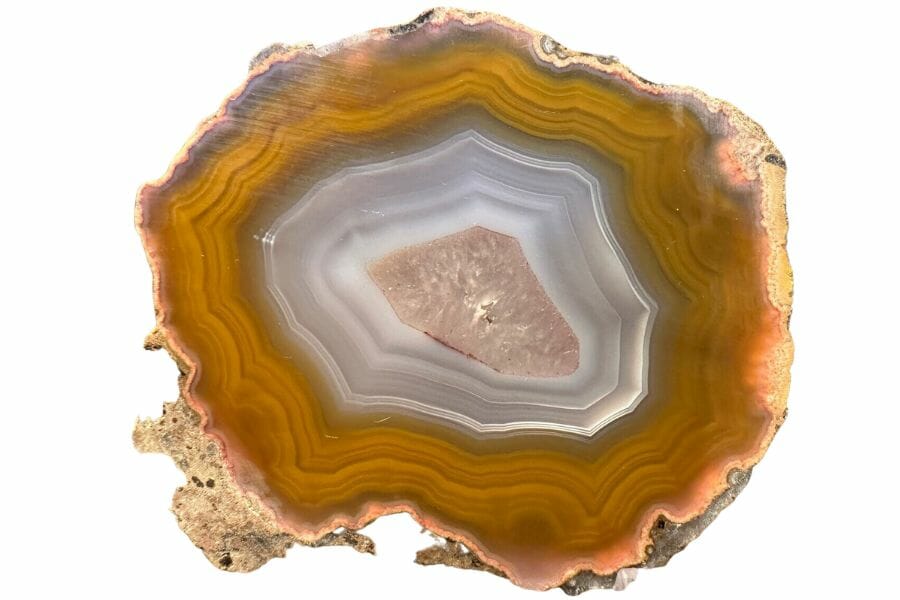
Photo provided by Costal Lapidary
Laguna agate is part of the banded chalcedony mineral in the quartz family. Its distinctive scarlet and crimson colors with layers of milky white, deep red, yellow, gold, and brown tones make it the most vibrant banded agate in the world. It is commonly used for its healing properties.
Where You Can Find Agates
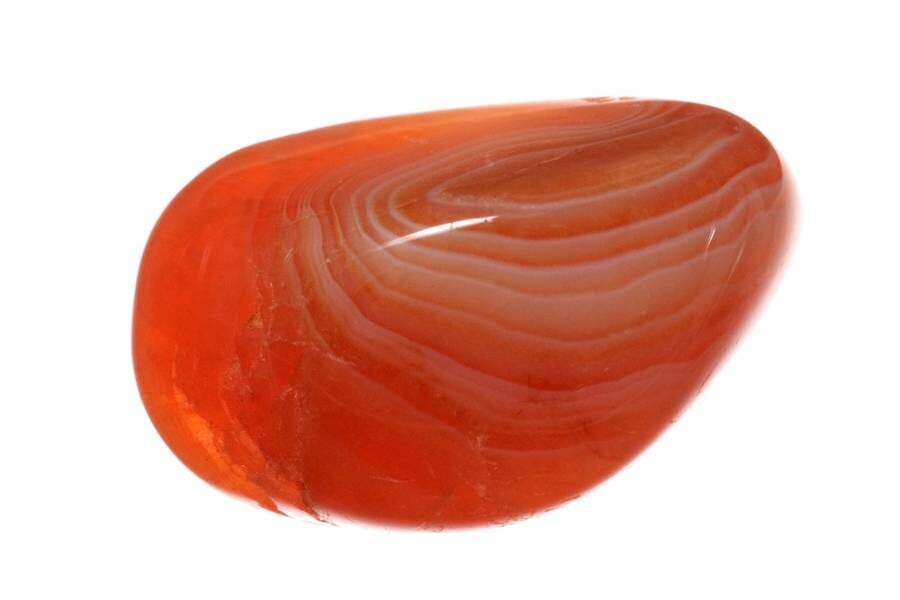
Agates form all over the world and there are a huge number of great places that you can visit to find them, you might even be able to find them in your backyard! Before you head out don’t forget to check out our full guide on the gem-hunting equipment you will need to ensure your success.
We’ve put together a number of local guides that can help as well as some more general guidance for other areas.
Here are some of the best places to find agates in real life that anyone can try:
Lake Superior, Canada and USA
Lake Superior is the world’s largest freshwater lake and remains a rockhound’s paradise for agates. It measures 350 miles long by 160 miles wide and is accessible from Wisconsin, Michigan and Minnesota. It is also accessible through its shores in Thunder Bay, Canada.
Agates were formed when water crept into the holes left by the bubbles after the lava had cooled and deposited layers of iron, quartz, and other minerals. The gemstones were liberated from the lava and transferred to new locations as the surrounding volcanic rock was eroded by glaciers or erosion.
The agates found here are irregular spheres of quartz deposited in layers to form concentric circles. Their colors include red, yellow and orange, caused by iron’s presence.
Rockhounds frequently hunt for these gemstones on the lake’s shores, gravel pits, and other locations where pebbles and gravel are abundant. While each pebble found has a chance of having agates; however, the most popular spots might have already been searched. The best time to hunt agates here is after a storm or strong wind.
Montana, USA
Rockhounds have consistently found the allure of famed Montana’s moss agate irresistible for over a century. The transparent to translucent chalcedony, which has a base color of white, gray, yellowish or reddish brown with brown streaks and moss-like dendritic patterns, is nestled in Southeast Montana’s Yellowstone River Basin.
The rocks’ distinctive appearance resulted from the volcanic activity that gave rise to them. These agate nodules developed in gaps and cavities of the local igneous bedrock and ash falls.
The Yellowstone region’s hydrothermal and regional magmatic activity produced this broad spread. The “Dryhead Agate,” another famous agate from Montana, is typically found as nodules with bands of red, orange, white and brown encircled by darker colors.
Rockhounds can hunt a variety of rocks along the banks and beds of the Yellowstone River and its tributaries. These gemstones include quartz, petrified wood and jasper, but the Montana moss agate is the most prized find. The best part is that rockhounding is totally free and a blast for the whole family.
Oregon, USA
Rockhounds will agree that rock hunting along the Oregon coast is their dreamland. With more than 300 miles of breathtaking Pacific Northwest terrain producing enormous amounts of rocks and minerals, the stunning Oregon agate is one of the most sought-after gemstones in the state.
The same miles of the Cascade Mountain range and many rivers and streams adorn this rockhound’s paradise. The Oregon agates were formed millions of years ago when trapped gasses in layers of molten lava and released via fissures when rocks cooled and solidified, leaving hollows behind.
Supersaturated silica fluids gradually filled the empty spaces, causing an active crystallization to form inside. Oregon agates have various colors and patterns formed under extreme heat and pressure.
Their colors range from clear to orange to blue-gray, and frequently have a milky coating. They are sufficiently solid and hard enough to polish into shining stones favored by rock hounds.
Winter beaches with exposed gravel beds from storms and waves are the finest times and locations to collect these agates.
North American Southwest
The American Southwest fire agate is one of the most prized varieties of agate. They are widespread throughout Mexico and the southwest of the United States, particularly in California, New Mexico and Arizona.
The gemstone was created by recent volcanic activity. Although its surface resembles quartz, it has interesting swirls, bubbles, and patterns.
They were formed when solutions of silica and iron oxides were deposited into cavities in volcanic rocks like gas bubbles in flow rocks, irregular-shaped vug fillings, or along fault or bedding plane fractures. This was done at a relatively shallow depth and under reduced pressure and temperature (50°-200°C).
This resulted in the alternating silica and iron oxide layers in fire agates showing exceptionally gorgeous, brilliant, iridescent rainbow coloration that rockhounds flock around. Ensure you are permitted before collecting rocks at any place you are searching.
Chihuahua, Mexico
Laguna agate, often regarded as the most vibrant banded agate in the world, is located in an isolated mountain region in the Mexican state of Chihuahua, around 150 miles south of the U.S.-Mexico border. It is renowned for its clear crimson and scarlet colors and incredibly tight banding.
Laguna agate is part of the banded chalcedony mineral in the quartz family; despite being mostly scarlet, its layers may also contain milky white, deep red, yellow, gold, and brown tones. This gemstone has a long history of use as decoration and its healing properties are legendary.
How to find agates on the beach
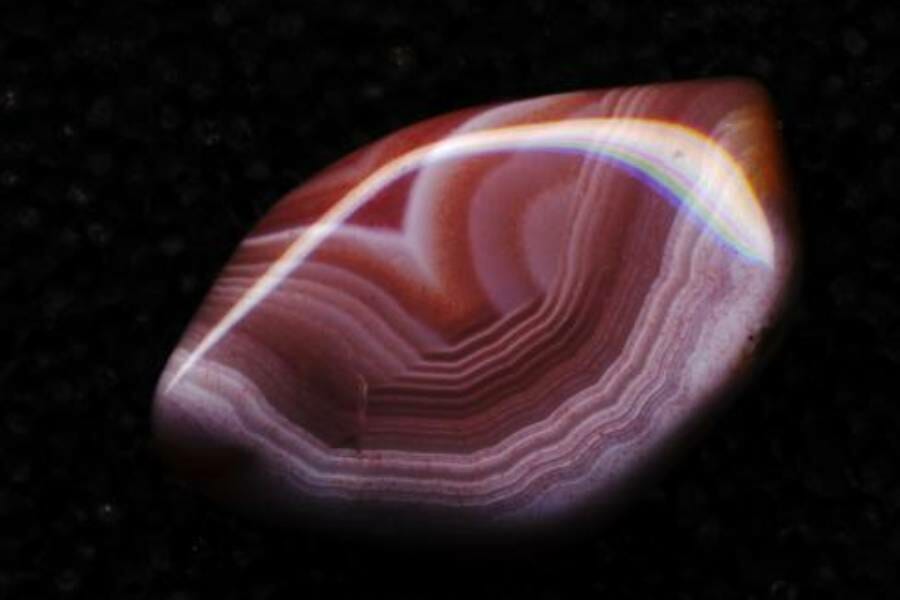
Beaches are rich in beautiful stones tumbled by the waves and their ruggedness and breathtaking beauty make rockhounds flood them to hunt for gemstones. However, following these guides for successful and hitch-free hunting is important.
Watch the tides
The tide changes twice every 24 hours and 50 minutes, so it makes sense to exercise caution near the ocean and watch out for erratic tides. While the high tide brings fresh agates to the beach for hunting, the low tides are the greatest time to search for them.
Search on sunny days
Agates are translucent, which means they will shine and are much simpler to spot while hunting on sunny days!
Arrive early to beat the crowd
Try to arrive at your preferred agate-hunting location early during peak hours. Fellow rockhounds try to beat each other to the best spots during peak periods. This means you must get to your spot before it becomes crowded with rockhounds.
Agate hunting tips we’ve picked up
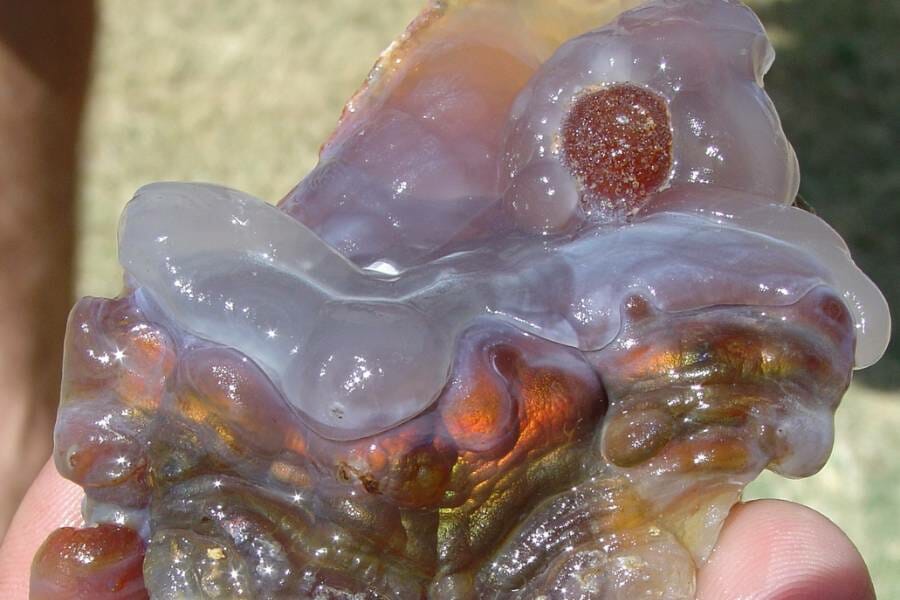
Agates can sometimes be challenging to find because of their color variations. Rockhounds must know how to look for these amazing jewels before planning their next expedition.
Know what you are looking for
You should learn about the specific sort of agate you are looking for. It is a good idea to view images of the agates before going on the hunt. Some distinctive features of agates to look out for in stones include a glossy or waxy look, color variations, translucence or transparency, and banding.
Due to the way they develop in voids inside the volcanic rock, most agates are no bigger than a baseball. Agates also look heavier than their size because of their density.
Remember that polishing or tumbling your agate will bring out its natural colors. Getting your agate wet is a good approach to see what it will look like when polished.
It’s easier when you’re looking for patterns
Agates come in a wide range of colors and patterns, so it’s essential to have an idea of what you’re looking for. Look for stones with bands or stripes of different colors or interesting patterns and inclusions.
Colors can vary from white to gray, brown, orange, red, green, blue, and even purple. Some agates also have unique patterns such as plumes, moss, and dendrites. Being able to recognize these characteristics can help you distinguish agates from other types of rocks.
Have a rock hammer and chisel handy
Agates can be embedded in hard rock, so it’s important to have the right tools to extract them. A rock hammer and chisel are necessary for breaking open rocks to reveal the agates inside.
We have been using the 22 ozEstwing Rock Pick for a long time and recommend it to beginnings and experienced agate hunters alike. You can also pick up an inexpensive set of KENDO chisels and be ready to go.
Look for cracks or cavities in the rocks that may contain agates, and carefully break them open with your hammer and chisel. It’s important to wear protective gear such as safety glasses and gloves and take safety precautions when using these tools.
Agate hunting is often about patience
Hunting for agates can be a slow and tedious process, and it can take some time before you find anything of value. It’s important to be patient and persistent and not give up if you don’t find anything right away.
Keep looking and exploring new areas, and eventually, you’ll find some beautiful agates to add to your collection. It’s also important to respect the environment and leave no trace while you’re hunting. By being patient and persistent and respecting the environment, you’ll increase your chances of finding some stunning agates.
How to identify agates once you find them
Being able to spot and uncut agate or an agate that has been broken open is critical when you’re out in real life searching for them. It’s very easy to just walk past them if you don’t know what to look for.
Here is an overview of what to look for on the outside as well as the inside of an agate:
What agates look like on the outside
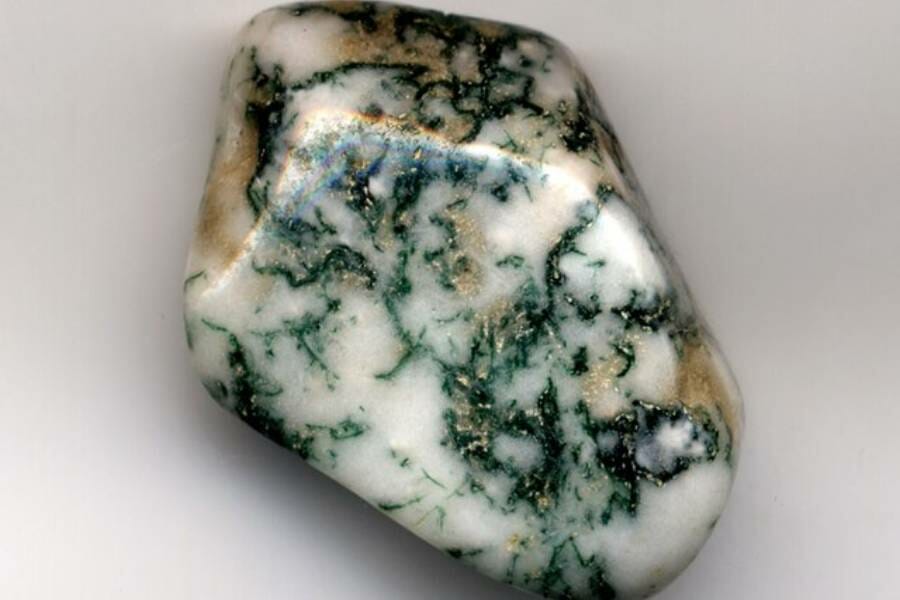
While polished agates can be easily recognized, unpolished ones can be deceptive with the whitish crust that gives the appearance of a potato to the inexperienced eye. Don’t be discouraged; even newbies should be able to recognize these gemstones with the following information.
Translucence
Check how much of the source’s light makes it to the gemstone. Take a specimen to the water to wash off the dirt, and then hold it up to the sun to assess the degree of transparency.
You can also check for transparency if you place your agate over a paper image. Agate is translucent, so when you place it over an image of something, the image should be visible but a little blurry. If the gemstone is opaque, your sample is likely jasper and not agate.
Transparency
When you can see clearly through your sample, it is transparent. This would suggest that your crystals are not agate but another quartz crystal.
Weight and density
The relative densities of agates make them heavier than they look. An agate often feels heavier than it looks to be. Put the specimen up against other stones and check if it is heavier than them. It is an agate if it is heavier.
How to identify agates on the inside

If you are convinced that the specimen you are holding is an agate from the outside, then a final confirmation can be made by looking at the specimen from the inside.
Color
You may need to use a hammer and chisel to break the stone apart to achieve this because you will need to look inside it. Agate is distinguished by its colorful bands, which can form concentric circles that develop towards the center. The recognizable orange-and-yellow banding is a dead giveaway that what you are holding is an agate!
Banding
Check for banding on the stone. This is present in most agate varieties. The banding will remain even if the stone’s rough exterior has been shattered or worn away. The bands or layers of various colors occur roughly parallel to the cavity’s sidewalls.
Feel for wax
Check the inside of the stone for a waxy or glassy texture. Rub your finger around the interior of the stone where the color bands are when you break open your sample with a chisel or hammer or if it has already been fractured. Agate should have a waxy or glassy feel.

